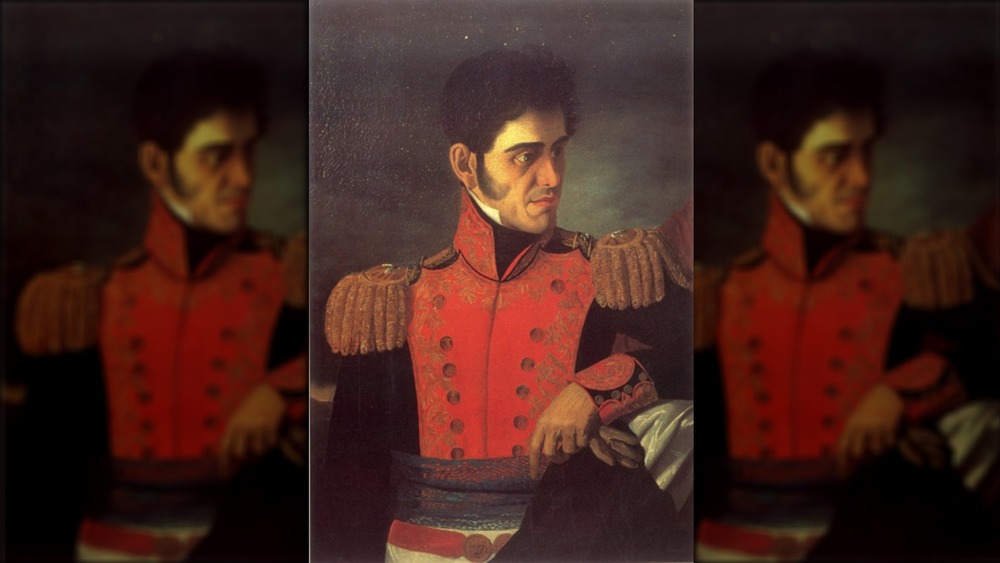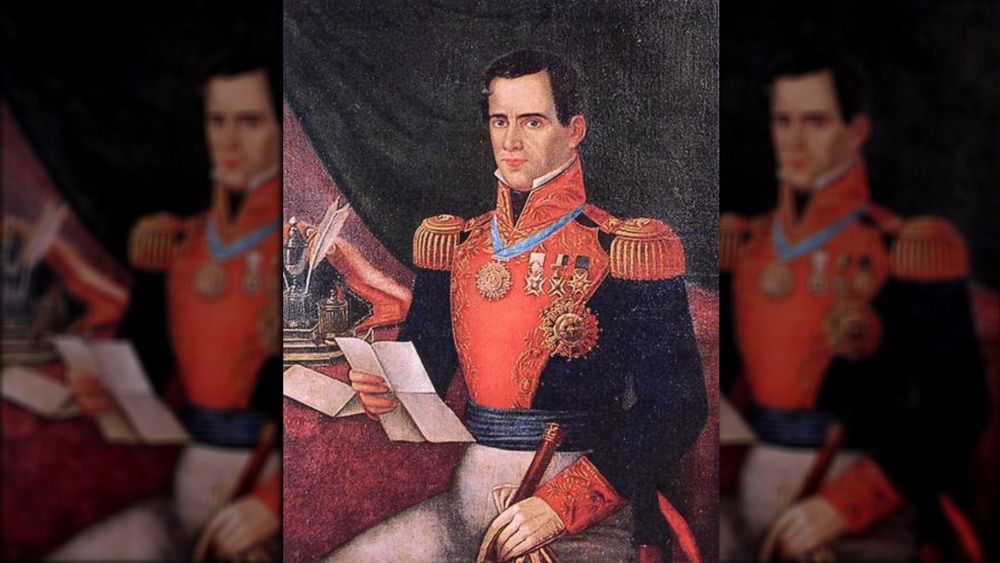The Bizarre Truth Of General Santa Anna's Left Leg
Mexican military officer and statesman Antonio López de Santa Ana was a conniving leader who liked to play both sides of a conflict for his own personal gain, and he was both lionized and reviled by his countrymen as a result. According to Britannica, he was an integral figure in Mexico's fight for independence from Spain, supporting insurgent leader Agustín de Iturbide in 1821, then helping overthrow him just two years later. He did the same thing with President Vicente Guerrero later in the decade. In 1829, he led a resistance effort when Spain tried to reconquer Mexico, and his exploits earned him the title of the Hero of Tampico. The renown vaulted him all the way to the presidency in 1833.
He took the office on six different occasions, according to the government of his home state of Veracruz, though the Texas State Historical Association claims it was only five. During that first term, American settlers in the then Mexican state of Texas started up a rebellion, and Santa Anna led the Mexican expedition that went to quell it. After successful battles at San Antonio's Alamo mission and Goliad, Santa Anna was finally defeated in April 1836 in the Battle of San Jacinto and captured by Sam Houston. Having failed to put an end to the Texas Revolution, he returned to Mexico, only to find that he had been deposed while he was away.
Santa Anna lost his left leg fighting the French in Mexico
Santa Anna did all that fighting in Texas on his own two legs. Stephen F. Austin, Sam Houston, Davy Crockett and the other American rebels may have taken Texas away from Mexico, but it was ultimately the French who would cause Santa Anna to lose his leg. According to Thought Co., French citizens living in Mexico were not too happy about what the war for independence and subsequent political and economic strife had done to their investments. With the Mexican government's refusal to provide any kind of reparations for the damages, France blockaded the port of Veracruz and demanded 600,000 pesos from the Mexican government. Mexico declared war on France in November, beginning the conflict that would be known to history as the "Pastry War."
Santa Anna had been at his ranch near the port when the war began, and he led a battalion of Mexican troops to defend Veracruz. Although they ended up retreating from the more powerful French forces, Santa Anna would gain more prestige as a war hero, as he had been wounded in the fight and had to have a leg amputated. He took the leg back with him to Mexico City and gave it a full state funeral with honors. It was later exhumed and dragged through the streets by angry protesters. And just like his sway with the public, Santa Anna would end up having trouble holding onto his new leg, as well.
Santa Anna's wooden leg is now in a museum in Illinois, of all places
The following decade, Mexico was still fighting, this time with the United States. During the conflict — which Americans call the Mexican-American War and Mexicans call the U.S. Intervention in Mexico — Santa Anna's forces were caught off-guard by an infantry unit from Illinois. In the fray, he left the prosthesis behind and retreated on horseback. It now resides in the Illinois State Military Museum in Springfield, but according to The Chicago Tribune, Texas thinks it has a valid claim to the stump, for some reason. Although he lost the appendage hundreds of miles to the south, a museum in San Jacinto County, Texas, thinks it's got dibs on the thing. It even petitioned the White House to have the leg relocated to the Lone Star State. A group of students at San Antonio's St. Mary's University have demanded that the leg be handed over to them so that they can in turn pass it on to Mexico. The Dallas Morning News has also sent a notice to the people of Illinois: "Texans are determined, and we don't give up easily."
Despite that determination, there's little chance Texas will get its hands on Santa Anna's leg. It has no historical claim to the prosthesis and its current custodians have been firm in answering Texas' demands. "The answer is no," said the Illinois Department of Military Affairs. "We paid for that leg with Illinois blood."


